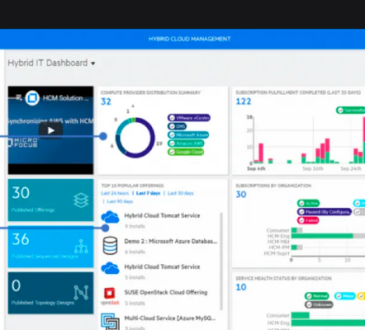
In an increasingly digital world, security and surveillance have evolved significantly. Gone are the days of relying solely on physical tapes and local storage for capturing and storing footage from security cameras. The advent of cloud technology has revolutionized the surveillance industry, offering an efficient and reliable solution for storing and managing video data. In this article, we will explore the concept of security camera cloud storage, its advantages, potential concerns, and its role in shaping the future of surveillance.
Contents
I. Understanding Security Camera Cloud Storage

Security camera cloud storage is a service that enables the recording and storage of video footage from surveillance cameras in remote data centers, commonly referred to as the “cloud.” This approach eliminates the need for on-site storage devices, such as digital video recorders (DVRs) or network video recorders (NVRs). Instead, the footage is securely stored and accessed over the internet.
Key Components of Security Camera Cloud Storage:
- Surveillance Cameras: These are the primary devices capturing video footage. They can be analog or IP cameras, with the latter being more popular due to their digital connectivity.
- Network Connectivity: A reliable internet connection is crucial for transmitting video data from the cameras to the cloud storage servers.
- Cloud Servers: Data centers equipped with high-capacity storage and processing capabilities that securely store and manage video footage.
- User Interface: A user-friendly platform or application that allows users to access, view, and manage their stored video data.
- Subscription Plans: Service providers typically offer various subscription plans with different storage capacities and features, allowing customers to choose the one that best suits their needs.
II. Advantages of Security Camera Cloud Storage

Security camera cloud storage offers a multitude of advantages, making it an attractive option for individuals and businesses alike:
- Remote Access: One of the most significant benefits of cloud storage is the ability to access video footage from anywhere with an internet connection. This remote access allows users to check their surveillance cameras in real-time or review past recordings, enhancing security and peace of mind.
- Scalability: Cloud storage can be easily scaled up or down according to the user’s needs. Whether you have a single camera or an extensive surveillance system, you can adjust your storage capacity without the hassle of changing physical hardware.
- Data Redundancy: Cloud storage providers typically maintain multiple copies of your data in different locations, ensuring redundancy and data recovery in case of hardware failures or data loss.
- Cost Efficiency: Eliminating the need for on-site storage hardware reduces initial setup and maintenance costs. Users can choose subscription plans that match their requirements and budget.
- Security and Encryption: Reputable cloud storage providers employ robust security measures to protect video data, including encryption during transmission and storage. This safeguards footage from unauthorized access or tampering.
- Integration: Many cloud storage solutions integrate with other smart home or business automation systems, offering a holistic approach to security and surveillance.
- Effortless Backup: Cloud storage provides an automated and hassle-free backup process. There’s no need to swap physical storage devices or worry about data corruption.
III. Potential Concerns and Challenges
While security camera cloud storage offers numerous advantages, it’s essential to consider potential concerns and challenges that may arise:
- Privacy Concerns: Storing video data in the cloud may raise privacy issues, as it involves transmitting and storing sensitive information online. Users should choose reputable providers with strong privacy policies.
- Internet Reliability: A stable internet connection is crucial for continuous surveillance. If the internet connection fails, users may lose access to their live video feeds and stored footage.
- Bandwidth Usage: Transmitting video data to the cloud can consume substantial bandwidth, which may affect other internet activities, especially for users with limited data plans.
- Subscription Costs: While cloud storage can be cost-effective, subscription fees can add up over time. Users should carefully evaluate their budget and storage needs when choosing a plan.
- Security Vulnerabilities: Although cloud storage providers implement robust security measures, they are not entirely immune to cyberattacks or data breaches. Users must ensure they follow best practices for secure access.
- Latency: Streaming video from the cloud may introduce some latency, which can be a concern for real-time monitoring, especially in situations where immediate responses are crucial.
IV. The Future of Security Camera Cloud Storage

As technology continues to advance, the future of security camera cloud storage holds even more promise and innovation:
- Artificial Intelligence Integration: AI-powered analytics can be integrated with cloud storage, enabling cameras to recognize objects, people, and events, making surveillance systems smarter and more efficient.
- Edge Computing: Combining cloud storage with edge computing allows data processing to occur closer to the source, reducing latency and improving real-time monitoring.
- Enhanced Mobile Access: Mobile applications for cloud storage are expected to become more sophisticated, offering features like two-way communication with cameras and advanced notification systems.
- Increased Integration: Cloud storage will likely integrate with a wider range of devices, including smart locks, sensors, and other IoT (Internet of Things) devices, creating a more comprehensive smart home or business security ecosystem.
- Regulatory Compliance: Cloud storage providers will continue to adapt to evolving data privacy and security regulations, ensuring that their services meet legal requirements.
- Customization: Users will have more options to customize their cloud storage experience, tailoring their surveillance system to their unique needs and preferences.
Conclusion
Security camera cloud storage has emerged as a transformative technology in the field of surveillance. Its numerous advantages, including remote access, scalability, cost-efficiency, and enhanced security, make it an attractive option for individuals and businesses. While there are potential concerns and challenges, careful selection of a reputable provider and adherence to best practices can mitigate these issues.
The future of security camera cloud storage holds the promise of further integration with emerging technologies, AI-driven enhancements, and a more personalized surveillance experience. As the technology continues to evolve, it is clear that security camera cloud storage will play an integral role in shaping the future of surveillance and security in an increasingly connected world.



